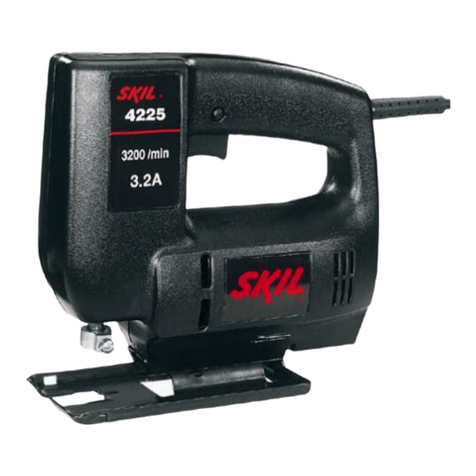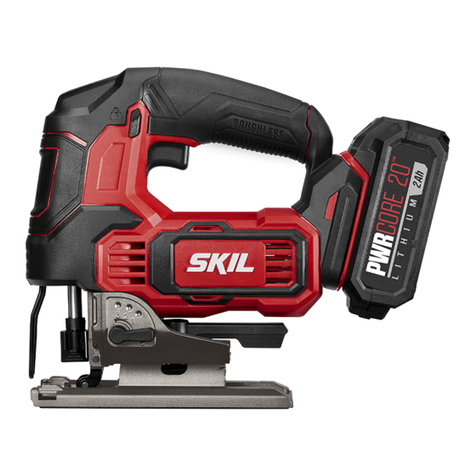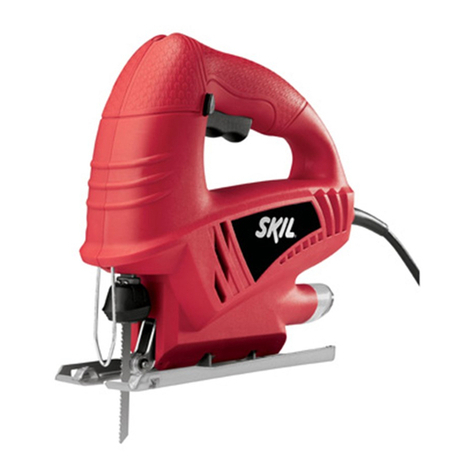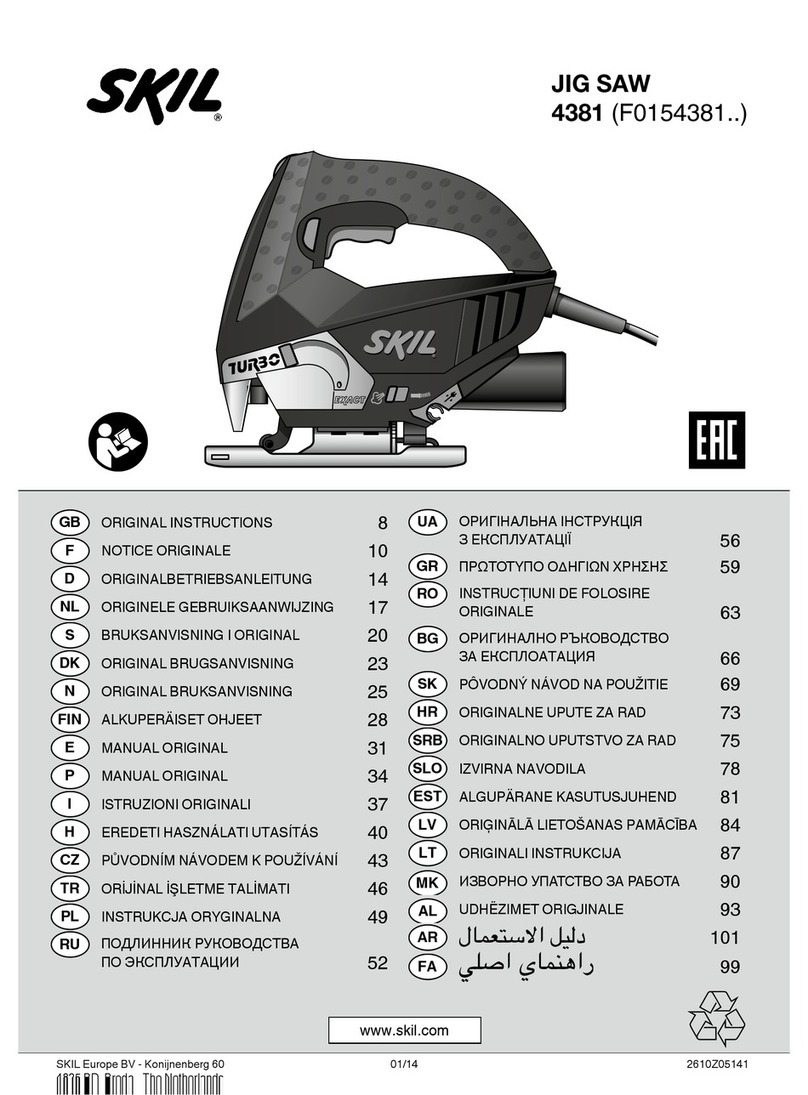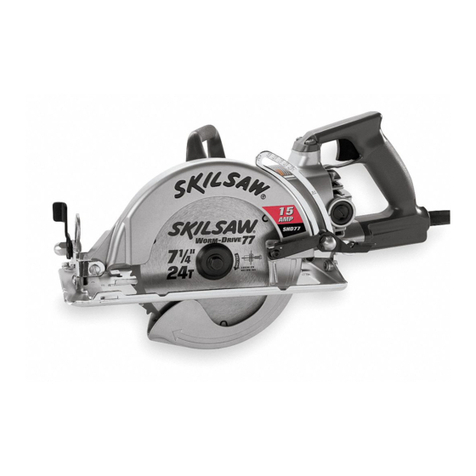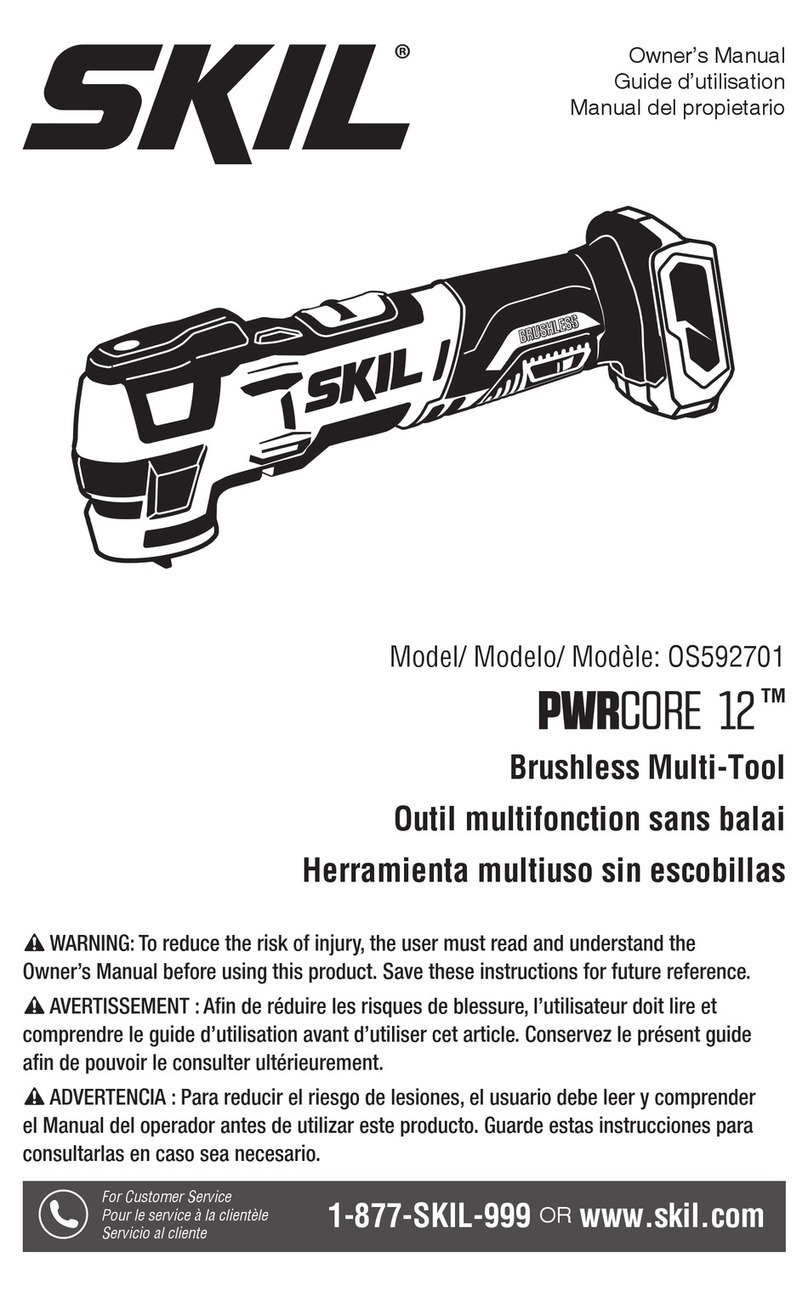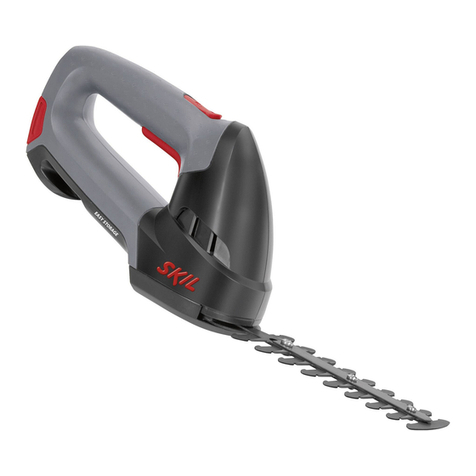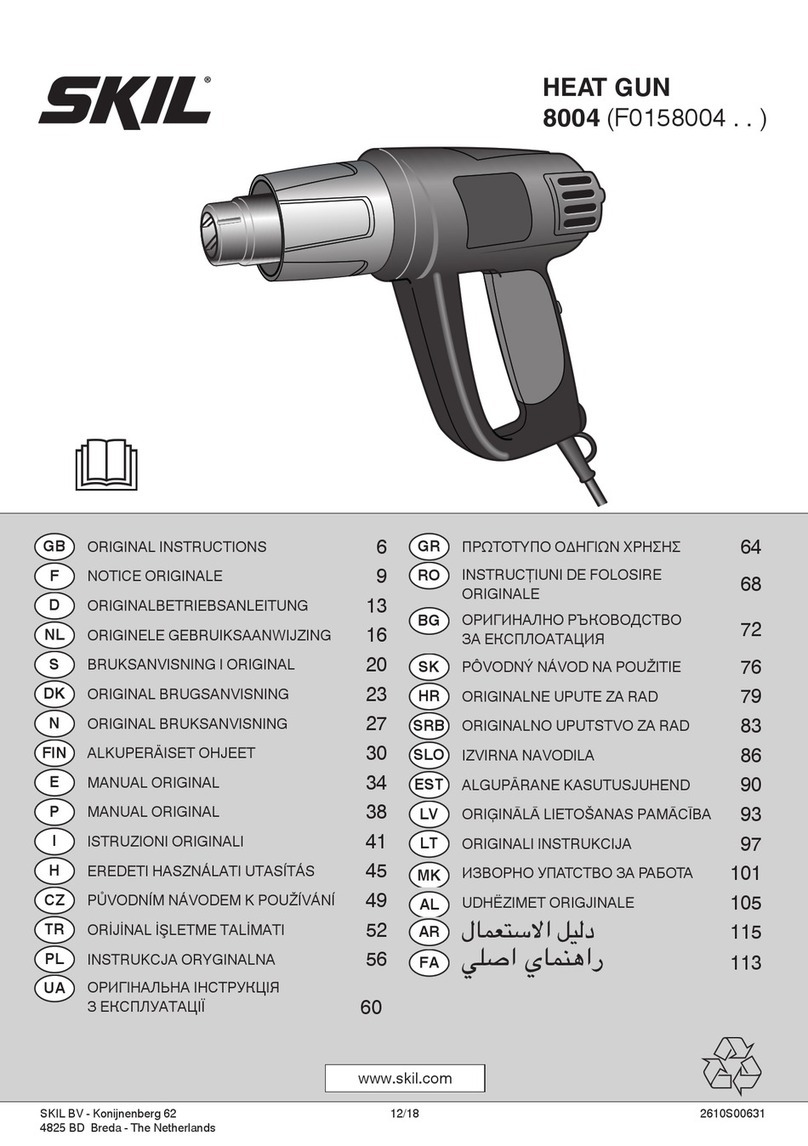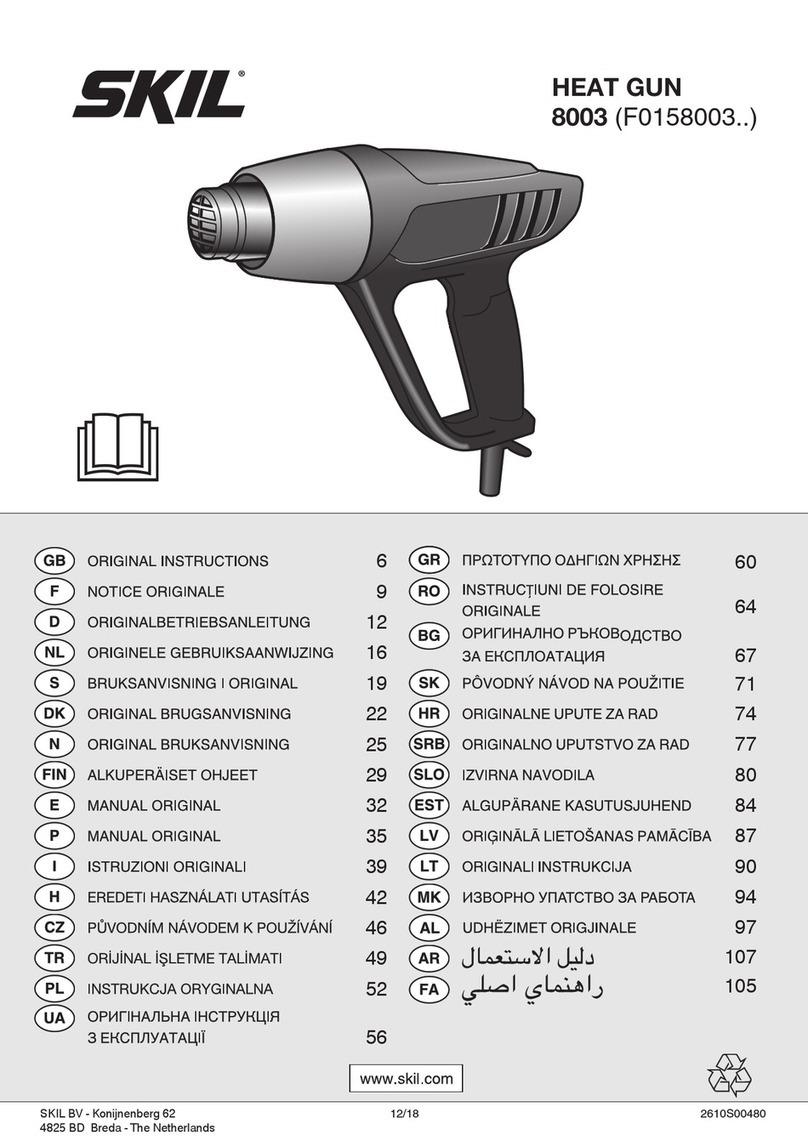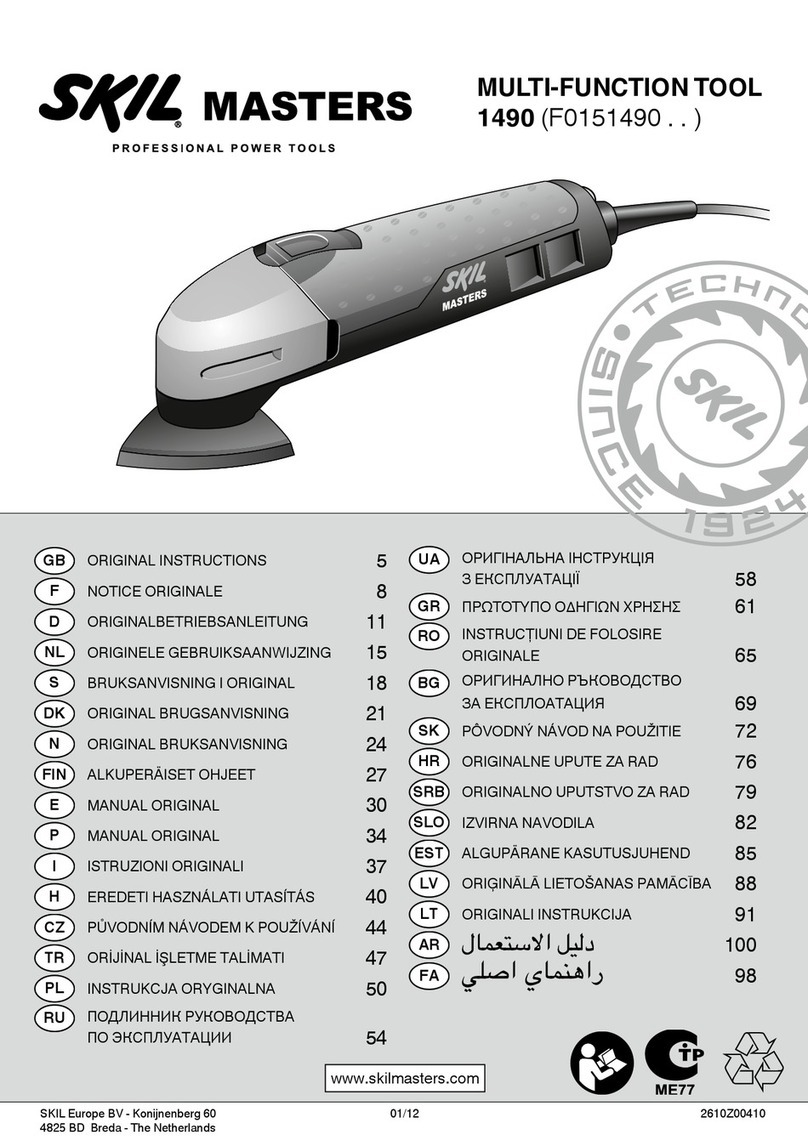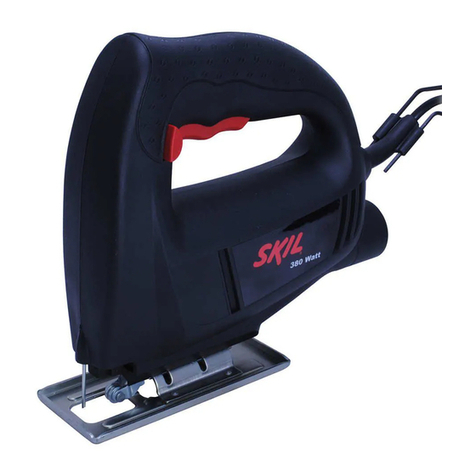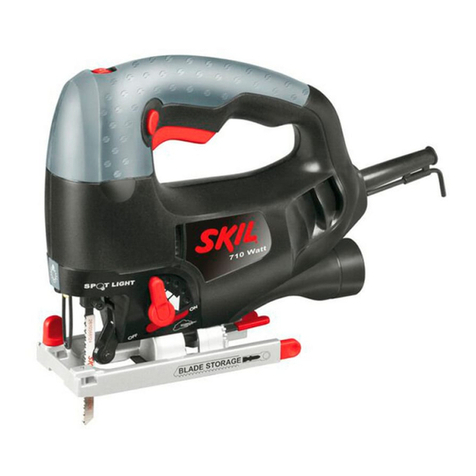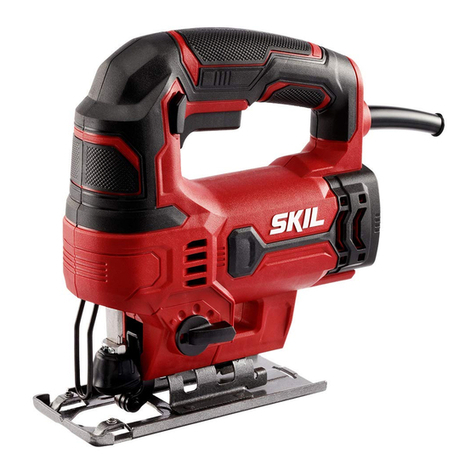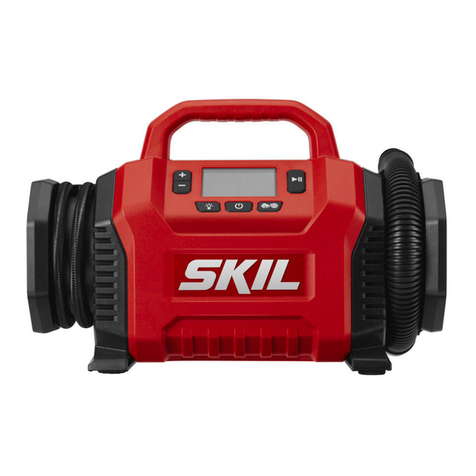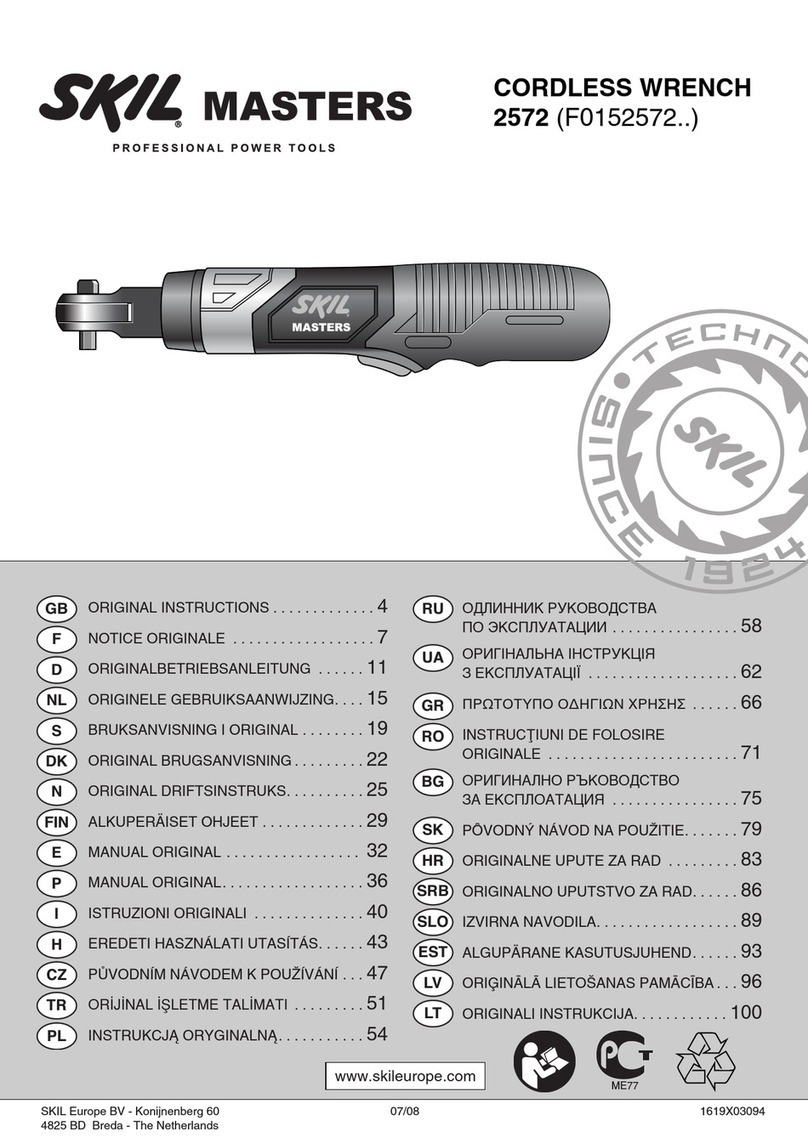
3
SAFETY INSTRUCTIONS
WARNING Read and understand all instructions. Failure to follow all instructions
listed below may result in electric shock, re and/or serious injury.
SAVE ALL WARNINGS AND INSTRUCTIONS FOR FUTURE
REFERENCE.
Battery tool use and care
Recharge only with the charger specied by the manufacturer. A charger that is suitable
for one type of battery pack may create a risk of re when used with another battery pack.
Use the inator only with specically designated battery packs. Use of any other battery
packs may create a risk of injury and re.
When battery pack is not in use, keep it away from other metal objects, like paper clips,
coins, keys, nails, screws or other small metal objects, that can make a connection
from one terminal to another. Shorting the battery terminals together may cause burns or a
re.
Under abusive conditions, liquid may be ejected from the battery; avoid contact. If
contact accidentally occurs, ush with water. If liquid contacts eyes, additionally seek
medical help. Liquid ejected from the battery may cause irritation or burns.
Do not use a battery pack or tool that is damaged or modied. Damaged or modied
batteries may exhibit unpredictable behaviour resulting in re, explosion or risk of injury.
Do not expose a battery pack or tool to re or excessive temperature. Exposure to re or
temperature above 265 °F may cause explosion.
Follow all charging instructions and do not charge the battery pack or tool outside the
temperature range specied in the instructions. Charging improperly or at temperatures
outside the specied range may damage the battery and increase the risk of re.
Service
Have your inator serviced by a SKIL Factory Service Center or Authorized SKIL
Service Station. This will ensure that the safety of the inator is maintained.
Never service damaged battery packs. Service of battery packs should only be performed
by the manufacturer or authorized service providers.
SAFETY WARNINGS FOR INFLATOR
Household use only.
Know your inator. Read operator’s manual carefully. Learn its applications and limitations,
as well as the specic potential hazards related to this tool. Following this rule will reduce the
risk of electric shock, re, or serious injury.
Risk of bursting. Do not preset the inator to result in an output pressure greater than
marked maximum pressure of item to be inated. Do not use at pressure greater than
160 PSI.
To reduce the risk of electric shock, do not expose to rain. Store indoors.
Inspect yearly for cracks, pin holes, or other imperfections that could cause the inator
to become unsafe. Never cut or drill holes in the inator.
Make sure that the hose is free of obstructions or snags. Entangled or snarled hoses can
cause loss of balance or footing and may become damaged.

